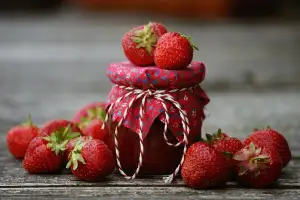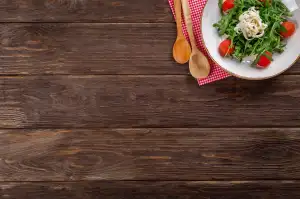Mastering Measurement Conversions: Unveiling the Mystery of Teaspoons in a Tablespoon

In the world of cooking and baking, precise measurements are crucial for achieving consistent and delicious results. One common measurement mystery that often perplexes home cooks is the relationship between teaspoons and tablespoons. Understanding this relationship is essential for accurate recipe execution.
Teaspoons and tablespoons are both units of volume commonly used in culinary measurements. They play a vital role in determining the right amount of ingredients needed to create a dish. While they may seem similar, there is a significant difference between these two measurements.
Teaspoon (often abbreviated as tsp) is the smaller of the two units, typically used for measuring smaller quantities such as spices, extracts, or flavorings. On the other hand, tablespoon (often abbreviated as tbsp) is larger and primarily used for measuring larger amounts like liquids or dry ingredients.
To avoid confusion when following recipes, it's important to have a clear understanding of how many teaspoons make up a tablespoon. By mastering this conversion, you'll be able to accurately measure ingredients and create mouthwatering dishes with ease. Let's dive deeper into this measurement mystery to unravel its secrets!
Definition: What is a Teaspoon and a Tablespoon?
In the culinary world, a teaspoon and a tablespoon are both units of measurement used to accurately measure ingredients. A teaspoon is a smaller unit of volume measurement, typically abbreviated as "tsp." It is commonly used for small quantities of ingredients such as spices, extracts, or liquids. On the other hand, a tablespoon is a larger unit of volume measurement, usually abbreviated as "tbsp." It is often used for larger quantities of ingredients like flour, sugar, or oil. The main difference between the two lies in their size and capacity. A teaspoon typically holds around 5 milliliters (ml) or about one-third of a fluid ounce (fl oz), while a tablespoon holds approximately 15 milliliters (ml) or one fluid ounce (fl oz). Understanding these definitions will help you accurately measure and follow recipes with precision.
Conversion: How Many Teaspoons are in a Tablespoon?
When it comes to measurement conversions in cooking, understanding the relationship between teaspoons and tablespoons is essential. A teaspoon (tsp) is a unit of volume measurement equal to 1/3 of a tablespoon (tbsp). In other words, there are 3 teaspoons in a tablespoon.
This conversion may seem simple, but it plays a crucial role in accurately following recipes. Knowing how many teaspoons are in a tablespoon allows you to adjust ingredient quantities accordingly and ensure the right balance of flavors and textures in your dishes.
Whether you're measuring spices, liquids, or dry ingredients, being able to convert between teaspoons and tablespoons will save you time and prevent any culinary mishaps. So, next time you come across a recipe that calls for tablespoons but only have teaspoons on hand, fear not! You can easily make the necessary conversion by multiplying the number of tablespoons by 3 to get the equivalent amount in teaspoons.
Mastering this conversion will not only enhance your culinary skills but also give you confidence in experimenting with different recipes. So let's dive into practical applications and explore how measurement conversions can elevate your cooking game.
Practical Application: Converting Measurements in Recipes
Now that we understand the relationship between teaspoons and tablespoons, let's explore how to apply this knowledge in practical cooking scenarios. Converting measurements is a crucial skill for any aspiring chef or home cook.
When following a recipe, you may encounter measurements in tablespoons but only have teaspoons available. In such cases, it's essential to know the conversion factor. Remember, there are three teaspoons in one tablespoon.
For example, if a recipe calls for two tablespoons of sugar and you only have teaspoons on hand, you would need six teaspoons to achieve the same measurement. Similarly, if a recipe requires four tablespoons of butter and you prefer using teaspoons, you would need twelve teaspoons instead.
Conversely, if a recipe lists measurements in teaspoons but you have a tablespoon measuring spoon, you can easily convert by dividing the number of teaspoons by three. For instance, if a recipe calls for nine teaspoons of vanilla extract and your measuring spoon is in tablespoons, you would need three tablespoons.
It's important to note that accuracy is key when converting measurements. Slight variations can significantly impact the taste and texture of your dish. Therefore, it's advisable to use precise measuring tools like spoons or cups specifically designed for accurate conversions.
By mastering measurement conversions in recipes, you gain flexibility in adjusting ingredient quantities according to your preferences or ingredient availability. This skill allows you to confidently experiment with different flavors while maintaining consistency and balance in your dishes.
In the next section, we will delve into why proper measurement matters in cooking and how it affects the outcome of your culinary creations.
Importance of Accuracy: Why Proper Measurement Matters in Cooking
Proper measurement is a fundamental aspect of successful cooking. Accuracy in measuring ingredients ensures that your recipes turn out as intended, with the right balance of flavors and textures. It is essential to understand that even a slight variation in measurements can significantly impact the outcome of a dish.
Firstly, accurate measurements guarantee consistency in your cooking. When you follow a recipe precisely, using the correct amount of each ingredient, you can recreate the same delicious dish time and again. This is particularly important for professional chefs who strive to maintain consistency across multiple servings or when recreating signature dishes.
Secondly, proper measurement ensures that flavors are balanced perfectly. Ingredients such as spices, salt, and baking powder can greatly affect the taste of a dish. Using too much or too little of these ingredients can result in an overpowering or lackluster flavor profile. By measuring accurately, you can achieve the desired balance and enhance the overall taste experience.
Moreover, precise measurements contribute to the texture and structure of baked goods. Baking is a science where precise ratios are crucial for achieving lightness, fluffiness, or crispness. Too much flour or leavening agent can lead to dense cakes or flat cookies. On the other hand, insufficient amounts may result in dry or crumbly textures. Accurate measurements ensure consistent results every time you bake.
Furthermore, proper measurement helps avoid potential health risks associated with certain ingredients. For example, excessive salt intake has been linked to high blood pressure and other health issues. By accurately measuring salt and other potentially harmful ingredients, you can control their quantities and make healthier choices without compromising on taste.
Lastly, precision in measurement showcases your commitment to quality cooking. It reflects professionalism and attention to detail in your culinary skills. Whether you're cooking for yourself or others, accurate measurements demonstrate your dedication to creating exceptional dishes.
In conclusion, understanding the importance of accuracy in cooking measurements cannot be overstated. It ensures consistency, balances flavors, determines texture, promotes health-conscious choices, and showcases your culinary expertise. By mastering measurement conversions and implementing precise measurements in your recipes, you elevate your cooking skills and create mouthwatering creations that are sure to impress.
Tips and Tricks: Making Measurement Conversions Easier
1. Memorize the Conversion Ratio: To simplify measurement conversions, it is helpful to memorize the conversion ratio between teaspoons and tablespoons. Remember that there are 3 teaspoons in a tablespoon.
2. Use Measuring Spoons: Invest in a good set of measuring spoons to ensure accurate measurements. These spoons come in various sizes, including teaspoons and tablespoons, making it easier to measure ingredients precisely.
3. Level Off Ingredients: When measuring dry ingredients like flour or sugar, use a straight-edged utensil to level off the ingredient in the measuring spoon or cup. This ensures you have an accurate measurement without any excess.
4. Convert Measurements Before Starting: Before you start cooking or baking, convert all the measurements in the recipe into your preferred unit of measurement. This will help you avoid confusion during the cooking process.
5. Double-Check Your Math: When converting larger quantities, such as cups to tablespoons or vice versa, double-check your math to avoid errors. It's easy to make mistakes when dealing with multiple conversions, so take your time and be precise.
6. Utilize Online Conversion Tools: If you're unsure about a measurement conversion, there are numerous online conversion tools available that can quickly and accurately convert teaspoons to tablespoons and vice versa.
7. Practice Estimation Skills: While accuracy is crucial in cooking, developing estimation skills can also be helpful when you don't have measuring spoons on hand. With practice, you'll be able to estimate teaspoon and tablespoon measurements more accurately.
By following these tips and tricks, you can make measurement conversions easier and more accurate in your culinary adventures.
Mastering measurement conversions, specifically understanding the relationship between teaspoons and tablespoons, is a crucial skill that can greatly enhance your culinary skills. By having a clear understanding of these measurements, you can ensure accuracy and consistency in your cooking.
Knowing that there are 3 teaspoons in a tablespoon allows you to convert recipes effortlessly. Whether you're scaling up or down a recipe, this knowledge will enable you to adjust ingredient quantities accurately.
Proper measurement matters in cooking because it directly affects the taste and texture of your dishes. Incorrect measurements can result in overly salty or bland flavors, dense or dry textures, and overall disappointing outcomes.
By paying attention to measurement conversions, you can avoid these pitfalls and create delicious meals every time. This knowledge also opens up a world of possibilities as you explore new recipes from different cuisines.
To make measurement conversions easier, keep handy tools like measuring spoons and cups in your kitchen. Familiarize yourself with common conversion ratios so that you can quickly adapt any recipe according to your needs.
In conclusion, understanding the mystery of teaspoons in a tablespoon is an essential skill for any aspiring chef or home cook. It allows for precision and accuracy in recipes, leading to consistently delightful results. So embrace the power of measurement knowledge and elevate your culinary skills to new heights!
Published: 11. 02. 2024
Category: Recipes



